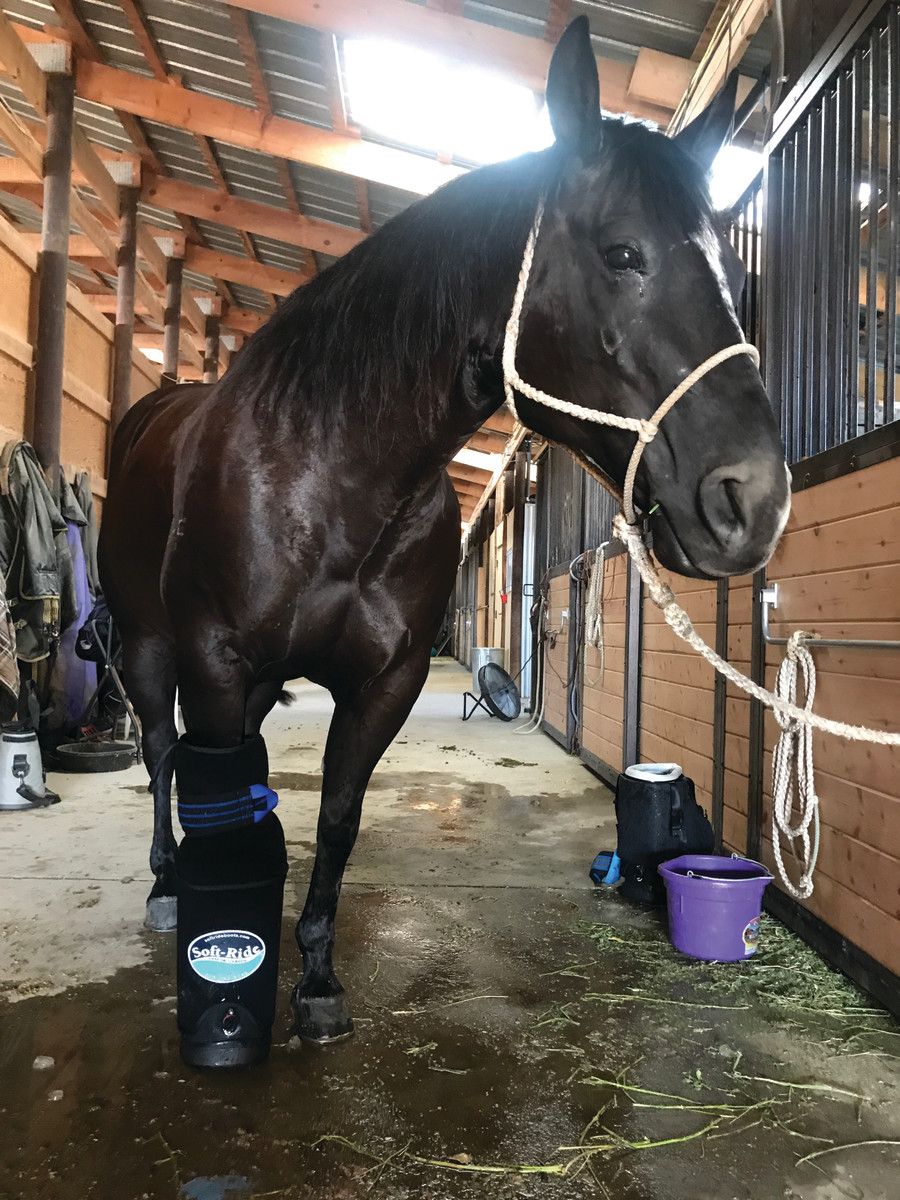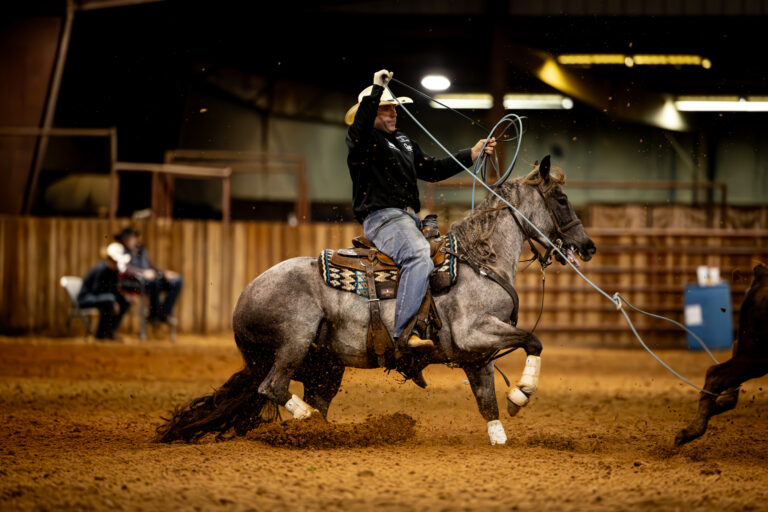Suspensory-ligament injuries are pretty prominent in performance horses. Billie Jack Saebens’ signature black heel horse, Kevin, provides a perfect cowboy case study in prevention and post-injury maintenance in this important area on the four-footed partner side of roping management.
Kevin—whose registered name is Domino Lena, and is owned by Dixon Flowers Quarter Horses, where Saebens is the head rope-horse trainer—is 13. The horse that helped Billie Jack make the Wrangler National Finals Rodeo cut in 2016-17 has spent part of the last two seasons on the injured reserve due to suspensory issues.
Billie Jack has ridden Kevin three years now, and besides the NFR, a couple of their team highlights include a second-place finish behind Coleman Proctor at the 2017 BFI, where Kevin was named Top Heel Horse of the BFI. At the 2018 San Antonio Stock Show & Rodeo, Proctor and Saebens set the 3.7-second arena record in the semifinals before their 3.9 in the finals won the rodeo. That’s a whole lot of versatility in the horse department.
“Kevin’s probably more well-known than I am,” smiled Saebens, who lives in Nowata, Oklahoma. “Everybody loves Kevin. He’s black, he’s shiny, and he works good. He’s pretty fancy to watch. He’s only about 14.1 hands, and I bet he weighs close to 1,200 pounds. So he’s kind of a little bulldog to look at.
“He never wants to do bad or wrong. He tries to help you, and wants to do good. There may be horses that do things better or faster, but wanting to do right means a lot. Kevin’s just a good horse.”

The good ones are worth going out of your way for. They’re always looking to return the favor by helping you win, and when they’re down, they’re missed in a big way.
“In 2017, Kevin strained his back left suspensory in February, and the BFI was the first place I got to ride him again,” Billie Jack said. “He was a little sore in February this year, so I rode a different horse on our first three steers at San Antonio. When it came down to the end, I got on Kevin. This time, he hurt his right front suspensory, and he was out from February until Livingston, Montana, over the Fourth of July.”
An ultrasound told the tale—heavy suspensory strains/slight suspensory tears—on the diagnoses both times. While Kevin was out the second time, friend and occasional driver Tiffany Wagner iced Kevin’s legs on a daily basis. Platelet Rich Plasma (PRP) treatment and shockwave therapy also were used every couple of weeks during Kevin’s rehab. He’s back now, but Billie Jack is particular about his care, and carefully picks the places he rides him.
“If the ground’s really deep, I won’t ride him,” he said. “They say that’s the hardest thing on suspensories. I don’t take him to little jackpots anymore, either. I ride him a lot. He gets loped 20-30 minutes a day. I don’t make very many runs on him. I might make one run on him in the practice pen, and put him up.
“I keep his shoeing up, and make sure he’s level and not too long. Good shoeing and exercise are key. The icing after use helps cool things back off and tighten things back up, to keep the inflammation out. The extra things I have to do to get to ride this horse are a small price to pay.”
Dr. Marty Tanner of Tanner Equine in Brock, Texas, specializes in Equine Sports Medicine, and has helped Billie Jack manage Kevin’s stresses and strains.
“Corrective shoeing and keeping the angles correct—so you don’t have a lot of ankle drop—is critical in these types of cases,” Tanner said. “Some of these horses are a little long in the pastern, and when that’s the case, some people would put a wedge on that horse to elevate the heel to get the correct angle. But you have to be cautious when you do that, because anytime you raise the heel of a horse, you cause the ankle to lower, which puts more stress on the suspensories. That’s just one example, but it’s a pretty common one.
“Injuries come with any sport, but fitness really is a big deal for these horses, because the suspensory is the only ligament in the body that has muscle fibers in it. It’s actually a blend of muscle and ligament. So you can actually strengthen a suspensory.”
Good conditioning helps prevent suspensory problems. “And it’s really helpful to warm these horses up really well, to loosen up the suspensories and prevent tearing,” said Dr. Tanner, who was named the 2016 Professional Rodeo Cowboys Association Veterinarian of the Year. “Icing after use constricts those vessels, and cuts down on post-exercise inflammation.
“Most suspensory injuries are cumulative, and not caused by just one run. A suspensory ligament is like a rope made up of hundreds of thousands of fibers. You can tear a few of those fibers and be OK. It’s typically a buildup of micro injuries that eventually creeps up and presents the problem. Naturally, it’s best to try and prevent suspensory injuries. But when it does happen, tailoring a management program to each particular horse and his conformation is your best bet.”











